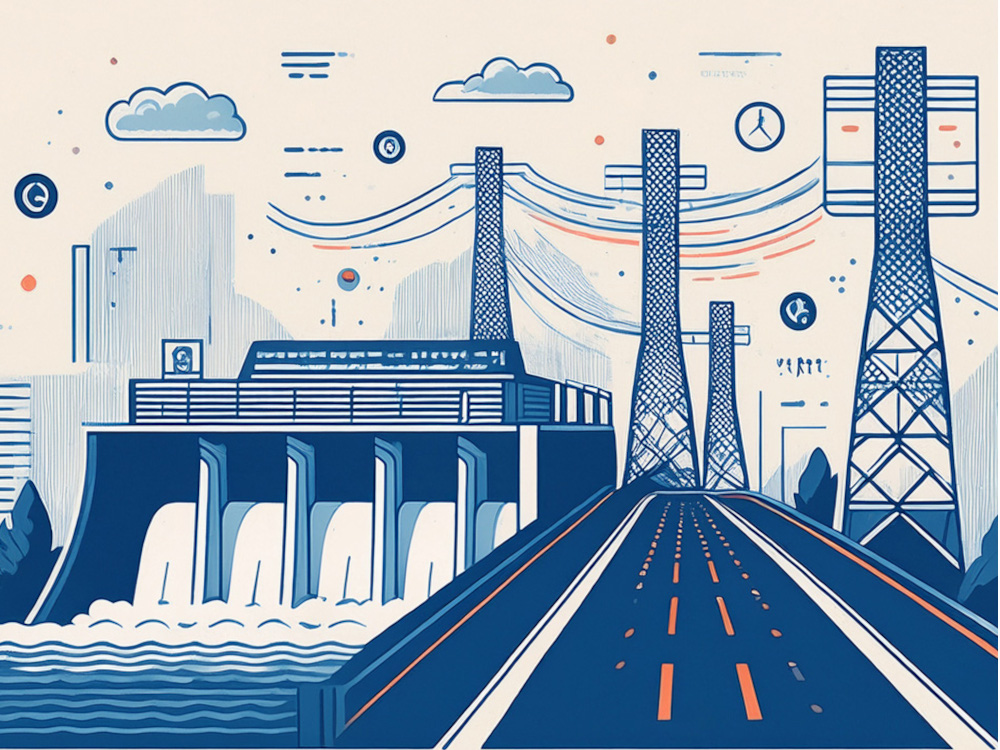This is the seventh in a series of articles in our special report on alternative investments in Canada. To see all the articles, click here.
The popularity of infrastructure investing has ebbed and flowed over the years. Long the purview of institutional investors, today it’s a solid allocation for Canadian family offices investing in bridges, data centres and pipelines while providing a mix of steady income and growth.
Above all, it’s the stability of infrastructure assets that often matters most.

“What we really like with private infrastructure is that the enterprise value of the underlying assets is very stable,” says Greg Nott, chief investment officer at Northwood Family Office in Toronto.
For many family offices, the allocation is to private assets, though the public equity sleeves of their portfolios likely contain companies involved in rail, pipelines, electrical generation and other essential networks and facilities that keep the economy humming.
That stability is a plus in the current environment, marked by upheaval driven by U.S. President Donald Trump’s policies.
Still, given the radical change on so many fronts—from taxation to climate change to foreign policy—investors might wonder if long-term allocations to illiquid assets such as infrastructure no longer align with the world’s largest economy.
That’s particularly a concern as the U.S. government backs away from the asset class’s fastest growing sectors, such as renewable energy.
Yet private infrastructure is “well insulated,” Nott argues. “Most of what we look at and hold, for example, does not rely on cross-border trade.”
Another reason is that, by nature, private infrastructure is not a tactical allocation taking advantage of near-term opportunities, he says. Rather, it provides a stabilizing role in portfolios when diversified across traditional infrastructure, from water utilities and storage facilities to “infrastructure 2.0, which is digital infrastructure, energy transition and transportation,” like electric vehicle charging stations.
What’s more, private infrastructure performed well amid high inflation and low growth, as we saw in 2022 and 2023. It is one of the few asset classes that benefits from that environment, which could be a persistent problem for the foreseeable future if tariffs remain an issue.
One recent report from BlackRock shows infrastructure outperformed other asset classes by a wide margin during periods of high inflation and low growth, with an average annual return exceeding 23 per cent. The next best performing asset was real estate at about 8 per cent per year.
“Revenue from infrastructure assets often will increase with inflation, for private assets,” explains Sebastian Nicholson, principal for infrastructure investments at Nicola Wealth in Vancouver.

Most private deals have inflation clauses in the contracts that ensure income does not erode, adds Nicholson, a manager for Nicola’s infrastructure fund.
As well, most of the positions in Nicola’s fund of funds, which holds mostly third-party private infrastructure funds, tend to increase in value as they become more expensive to replace amid inflation.
Similar arguments can be made for its investments alongside institutional investors on a few individual infrastructure opportunities. One notable deal the fund made has been investing, alongside CVC DIF, a Netherlands-based infrastructure investment manager, in French water utility provider Saur.
CVC DIF has “teams on the ground in France with 20 years of investing experience,” Nicholson adds, giving Nicola and other investors confidence in making this allocation.
More broadly, the investment in water infrastructure illustrates other attractive upsides of private infrastructure. “Demand for providing clean drinking water and wastewater services is very stable,” he says.
Still, the risk with many private infrastructure assets, including Saur, is illiquidity. That’s one reason Nicola’s fund holds many third-party funds. “If you only did direct investment, you would struggle to get more than 10 assets in the portfolio, which isn’t great for diversification,” he adds.
Investing in third-party funds helps meet investors’ liquidity needs, allowing managers to keep the fund evergreen and open-ended for new investors while providing moderate liquidity for exiting investors.
Its focus on mid-market infrastructure, often around the $1-billion range, also helps afford a little more liquidity. It’s an approach many infrastructure funds appealing to family offices have taken in the past few years.
“Roughly 20 years ago, there was almost zero” capital allocated to this space from private investment, says Taylor McManus, a Toronto-based principal, responsible for secondary and primary fund investment opportunities, with Hamilton Lane’s infrastructure investment team in North America. “Real assets exposure was likely through private real estate.”
Revenue from infrastructure assets often will increase with inflation, for private assets.
Sebastian Nicholson, Nicola Wealth
The recent growth of evergreen infrastructure funds, including Hamilton Lane’s Global Private Infrastructure Fund, launched in 2024, offers family office investors exposure to the asset class like never before.
Today, Canadian family offices allocate as much as 30 per cent of the private sleeve of their portfolios to infrastructure, matching what institutional allocators have been doing for years.
Data from Hamilton Lane shows the value of doing so, demonstrating how a portfolio with private infrastructure is less volatile than a 60/40 portfolio of stocks and bonds, and even portfolios with allocations to private equity and credit, but no infrastructure.
What’s more, reduced volatility can lead to better returns, with data showing that, since 2021, portfolios with infrastructure have experienced higher annualized returns.
Increasingly, family offices recognize these stabilizing benefits.
Yet, infrastructure allocations also can offer growth-oriented benefits via exposure to fast-growing parts of the economy such as artificial intelligence. Data centres, for instance, have been among infrastructure’s hottest investments, driven by, in Canada alone, demand growth expectations of 15 per cent annually through 2030 worth about $16 billion.
The theme also converges with another high-demand infrastructure asset, renewable energy, McManus adds.
“Data centres are getting so large—hundreds of megawatts per site—that they alone need so much power,” he says, noting that AI is driving that demand, as is broader electrification of the economy.
Nuclear power, too, is back on investors’ radar. While the prospect is intriguing, particularly with small-scale reactors that align with mid-market infrastructure investment, Hamilton Lane does not see nuclear as investable for now.
“There are still a number of headwinds that make it a little bit less appealing,” McManus says, noting that development timelines remain uncertain amid widespread NIMBYism. “If you look out a decade, you may start to see more [opportunities].”
Renewable power has a clearer investment case, even if the Trump administration is removing support. Demand at the state level remains high, McManus says. “It’s a very efficient and well understood way to add power to the grid.”
Of course, no one element of infrastructure should be an investor’s sole focus. Diversified exposure across traditional and emerging opportunities is what family offices seek, Nicholson notes.
“It’s a portfolio diversifier offering the benefits of fixed income with predictable cash flows and equities’ ability to grow capital over time—a blend many investors want.”
The Canadian Family Offices newsletter comes out on Sundays and Wednesdays. If you are interested in stories about Canadian enterprising families, family offices and the professionals who work with them, but like your content aggregated, you can sign up for our free newsletter here.
Please visit here to see information about our standards of journalistic excellence.



